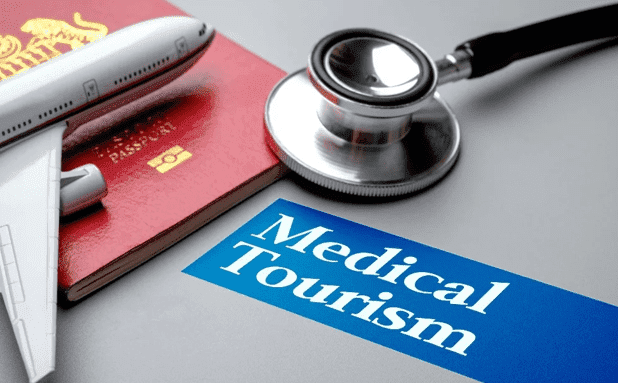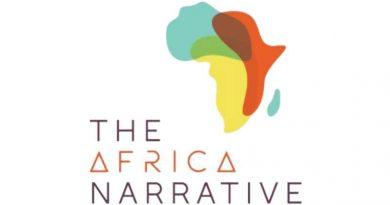How the UAE became one of the world’s fastest-growing medical tourism destinations
The UAE has established itself as a leading destination for medical tourism globally, with significant potential for further expansion, according to local experts.
Medical tourism, which involves individuals traveling abroad for healthcare services, is a lucrative market projected to grow from $31.91 billion in 2023 to $52.87 billion in 2027, as reported by GlobalData.
While countries like Mexico, Costa Rica, Malaysia, Thailand, Turkey, and India are popular choices for medical tourism, the UAE stands out as one of the fastest-growing destinations.
In 2022, wellness tourists spent approximately $5.4 billion in the UAE, a substantial increase from $2.1 billion in 2020, based on data from the Global Wellness Economy Monitor.
Apart from individual medical travelers, companies are also increasingly arranging medical trips for their employees, noted Stan Klyuy, the chief commercial officer at Tumodo, a corporate travel platform.
Mr. Klyuy mentioned, “Over the past year, the number of bookings related to medical tourism has doubled, with some companies prioritizing the health of their employees by sending them overseas for treatment at the company’s expense.”
The UAE’s commitment to healthcare is evident through various initiatives, such as the Emirates Health Services Innovation Strategy 2023-2026 and the National Strategy for Wellbeing 2031.
Furthermore, the UAE is leading in health spending growth within the GCC, with projections indicating an increase to $30.7 billion by 2027, according to Alpen Capital’s survey.
In 2018, the Abu Dhabi Medical Tourism e-portal was launched as a digital platform offering visitors access to numerous healthcare facilities within a national medical tourism network, along with over 300 treatment packages from more than 170 doctors across the emirate.
Recently, Dubai Healthcare City introduced a medical visa program, allowing treatment centers to apply for visas lasting three to six months on behalf of their patients.
Geographic breakdown of the UAE’s international healthcare tourists (percentage) in 2022

In 2022, Dubai Health Authority recorded a significant increase in the number of medical tourists, reaching a total of 674,000 individuals. These travelers contributed Dh992 million ($270 million) to the local economy, a substantial rise from the previous year’s Dh262 million. The growth can be attributed to various factors, including Dubai’s advantageous location, its commitment to safety, the presence of state-of-the-art infrastructure, and the availability of high-quality amenities.
Additionally, the influx of highly skilled medical professionals has played a crucial role in attracting medical tourists to the city. Abu Dhabi, another popular destination, also witnessed a steady flow of medical tourists, with over 15,000 individuals visiting the capital annually, as reported by the Abu Dhabi Investment Office. Jorge A Guzman, the chief executive of Cleveland Clinic Abu Dhabi, a renowned hospital, stated that their facility experienced a 20% increase in the number of medical tourists last year.
Merging health care with hospitality
When Dr Raza Siddiqui arrived in the UAE from India a quarter of a century ago, the global medical tourism industry was just beginning to take off. He had initially come to the UAE with Apollo Hospitals to attract healthcare travelers from the Emirates to India, but ended up staying to help bring visitors to the UAE instead.
According to Dr Siddiqui, medical tourism consists of two components: healthcare and hospitality. At that time, Dubai and the UAE were seen as preferred destinations for hospitality. Recognizing the immense potential in the UAE, Dr Siddiqui played a key role in establishing RAK Hospital in 2007. The hospital, designed by the same architects as America’s Mayo Clinic, aimed to achieve the same level of international recognition.
Since then, RAK Hospital has become a cornerstone of the UAE’s medical tourism industry and is set to triple its capacity by the end of this year to meet the growing demand. However, Dr Siddiqui believes there is still significant room for growth across the country. Currently, an estimated 6,000 to 7,000 medical tourists pass through Dubai Airports daily to travel to other destinations such as India, Thailand, Singapore, Germany, and the UK. Dr Siddiqui believes that these tourists could potentially choose the UAE as their destination instead.
He emphasizes that one medical tourist is equivalent to ten leisure tourists in terms of the money spent and the boost to the country’s reputation. Additionally, each medical tourist is accompanied by at least one relative who stays at a hotel. Therefore, the revenue generated from 1,000 hospital beds is equivalent to that of 10,000 hotel rooms. This makes medical tourism one of the best non-oil economy alternatives for the country.
The image it presents is beyond imagination, as choosing a country for healthcare places it among the most technologically advanced nations globally.
Specialist health care and utilising the Metaverse
Dr. Shanila Laiju, the group chief executive of Medcare Hospitals and Medical Centres, highlights the factors that attract tourists to the Emirates. These include a combination of top-notch infrastructure, highly skilled medical professionals, affordable treatment options, advanced procedures, and minimal waiting times. She also emphasizes that the country offers a unique blend of healthcare and tourism.
Medcare Hospitals and Medical Centres, with over 20 facilities in Dubai and Sharjah, has experienced significant growth in demand from patients with rare and complex diseases. For instance, their Women and Children Hospital has gained recognition for its gene therapy for spinal muscular atrophy, a genetic degenerative neuromuscular disorder. They have successfully administered 100 gene therapy infusions to children with this condition, with the majority of patients traveling from Turkey, as well as from Romania, Russia, Belarus, Nepal, and Iran.
To cater to the growing medical tourism market, the group plans to open Medcare Royal Hospital near Dubai International Airport later this year. Additionally, they offer telehealth services, including instant appointments with doctors and virtual hospital tours. Dr. Laiju emphasizes that patients can explore the hospital facilities in real-time through the metaverse, enabling them to make informed decisions about their surgical procedures at Medcare.
Primed for future growth
As the global population continues to increase and advancements in healthcare enable individuals to live longer, the medical tourism sector is poised for significant expansion.
According to Dr. Laiju, the high prevalence rates of lifestyle-related diseases such as obesity and diabetes in the GCC suggest that many prospective medical and wellness tourists will likely come from neighboring countries. In order to cater to this demand, it is crucial to develop healthcare experiences that prioritize well-being over mere treatment.
Furthermore, addressing critical shortages within the region’s healthcare industry is imperative. This includes raising awareness about preventive care and taking necessary steps to improve healthcare services. By doing so, not only will the local community benefit from enhanced healthcare provisions, but the region will also be better prepared for future growth. SOURCE: Katy Gillett, The National News




